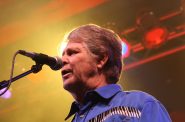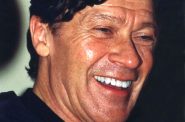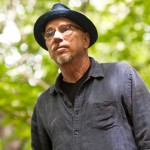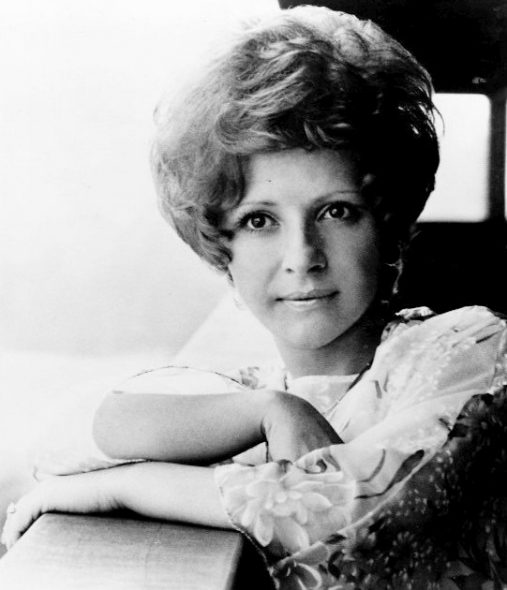The Big Voice of Brenda Lee
Her song, “I’m Sorry”, is one of the best pop vocals ever recorded.
Ken Burns has a reputation for being thorough and he mostly is in his latest documentary, “Country Music.” It’s a big topic and he was smart enough to get some good talking heads like Marty Stuart, who is a genuine and funny tour guide. And he can play mandolin better than just about anybody. The week before the first episode PBS aired a promotional concert taped at The Ryman Auditorium. Stuart did an impossibly fast and soulful version of “Orange Blossom Special.” It was just him and his mandolin and if you weren’t a believer before you saw it, you had to be after.
The way too short segment on the foundational Louvin Brothers was a big disappointment. Ask someone who knows country music and they will tell you just how influential their tight brother harmonies and songwriting were. They basically invented the The Everly Brothers and The Beatles carried some of their innovations a step further. Aside from that, their very dramatic lives were perfect fodder for this kind of show. So why was it just a few minutes? Ask Burns — I think he shows a little more interest in the sociology than the music.
For instance, there is a lot time spent on the alleged “diversity” in country. That my friends, is wishful thinking. Music Row is still cranking out what Jon Pareles so aptly called “The soundtrack of white flight.” You only have to go as far as this year’s monster hit, “Old Town Road” by Little Nas, to get a hint of the level of enlightenment on country radio. One thing Burns does do is spend time illustrating the importance of black music to the Big Three, Jimmie Rodgers, Bill Monroe and Hank Williams. He also points out A.P. Carter’s debt to his research partner, Lesley Riddle, an African/American, on long song collecting journeys around the south.
There are so many revelations in this great series. One of them is the smart, sassy and abundantly talented Brenda Lee. A whopping 4’10” in her stocking feet, with a voice that sounds ten times bigger, she’s been singing in front of crowds since she was three. She was a high energy rockabilly singer of the red hot school. Typical of her early career is the insanely rocking “Sweet Nothins.” At the same time she was capable of holding her own when placed at the center of a lavish Harold Bradley arrangement. When she sang “I’m Sorry”, it was a whole different thing. It’s one of the best pop vocals ever recorded, full of regret and world weariness. I dominates the track, a flawless, confidant performance. She was fifteen when she recorded it.
She does so many things so well. Her diction is perfect and she phrases like a pro, swinging on the rhythm but not calling attention to anything but the lyric. Yes, her trademark hiccup at the end of each verse is corny, but it’s also beautiful in its lack of self consciousness. I was somehow reminded of the equally expressive Edith Piaf. Both are Little Sparrows, capable of big emotions.
Both songs were written by Ronnie Self. He had help on “I’m Sorry” from Dub Allbrittin. Ronnie was a character and then some. A legend in his home town of Springfield, Missouri, he’s featured in the great new documentary by writer Dave Hoekstra called “The Center of Nowhere -The Spirit and Sounds of Springfield, MO.” In a nutshell (which is an appropriate place for him) he was unstable, eccentric and wildly talented. That made him, from what I’ve seen of that town, pretty typical. The Springfield radio show, The Ozark Jubilee, which is where I assume Ronnie and Brenda met, once rivaled The Grand Ole Opry, and gets a mention or two, along with its host, Red Foley, in Burns’ doc. (Also mentioned is Milwaukee’s Schroeder Hotel. Felice Bryant was an elevator operator there when she met her husband Boudleaux . They went on to form a truly great songwriting partnership.)
Last time I was in Nashville, I stayed with friends who live around the corner from Brenda Lee. When they showed me her house, I thought they were kidding me. It was as average looking as the not-so-special block it sat on. They told me there’s something a little more grand behind it, away from prying eyes. That’s the way things are done down there. Five minutes from downtown there are no sidewalks or curbs and you see mailboxes on posts that make you feel like you’re in a small town. It’s a perfect place to make country music.
While Nashville is the center of the industry, country music is more spread out. It’s made by and for working class folks, and you can go from New York City to San Diego and find it easily. Most of what Burns covers is worthy of the wide audience he attracts, and the stories, including Brenda Lee’s, are often tales of extreme hardship. Speaking of, Garth Brooks is coming up — if he can make me like him, Burns deserves another Emmy.
Sieger on Songs
-
Remembering Brian and Sly
 Jun 26th, 2025 by John Sieger
Jun 26th, 2025 by John Sieger
-
The Legacy of Robbie Robertson
 Sep 28th, 2023 by John Sieger
Sep 28th, 2023 by John Sieger
-
Bill Nighy Sings ‘The Rowan Tree’
 Apr 12th, 2023 by John Sieger
Apr 12th, 2023 by John Sieger






















The Burns documentary on country music shines when it highlights relationships between performers and song writers. For example, the segment on how Willie Nelson and Merle Haggard couldn’t find a song to feature as a cornerstone for an album on duets they were making until Willie found Townes Van Zandt’s “Pancho and Lefty” showed us how devoted Willie and Merle and Townes were to SONG.
I remember Brenda Lee’s “I’m Sorry” today as clearly as I heard it fifty some years ago. I have heard a # of Garth Brooks tunes, but I cannot remember any of them.